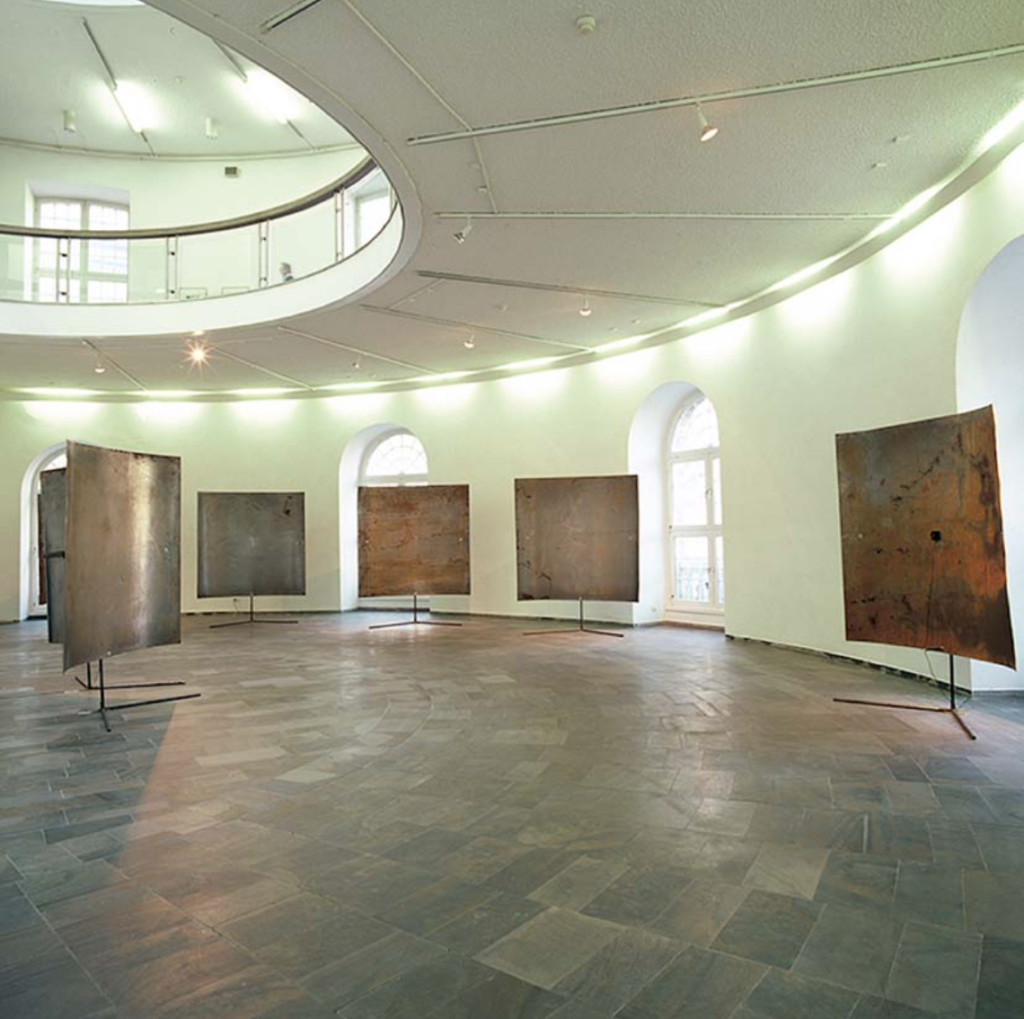
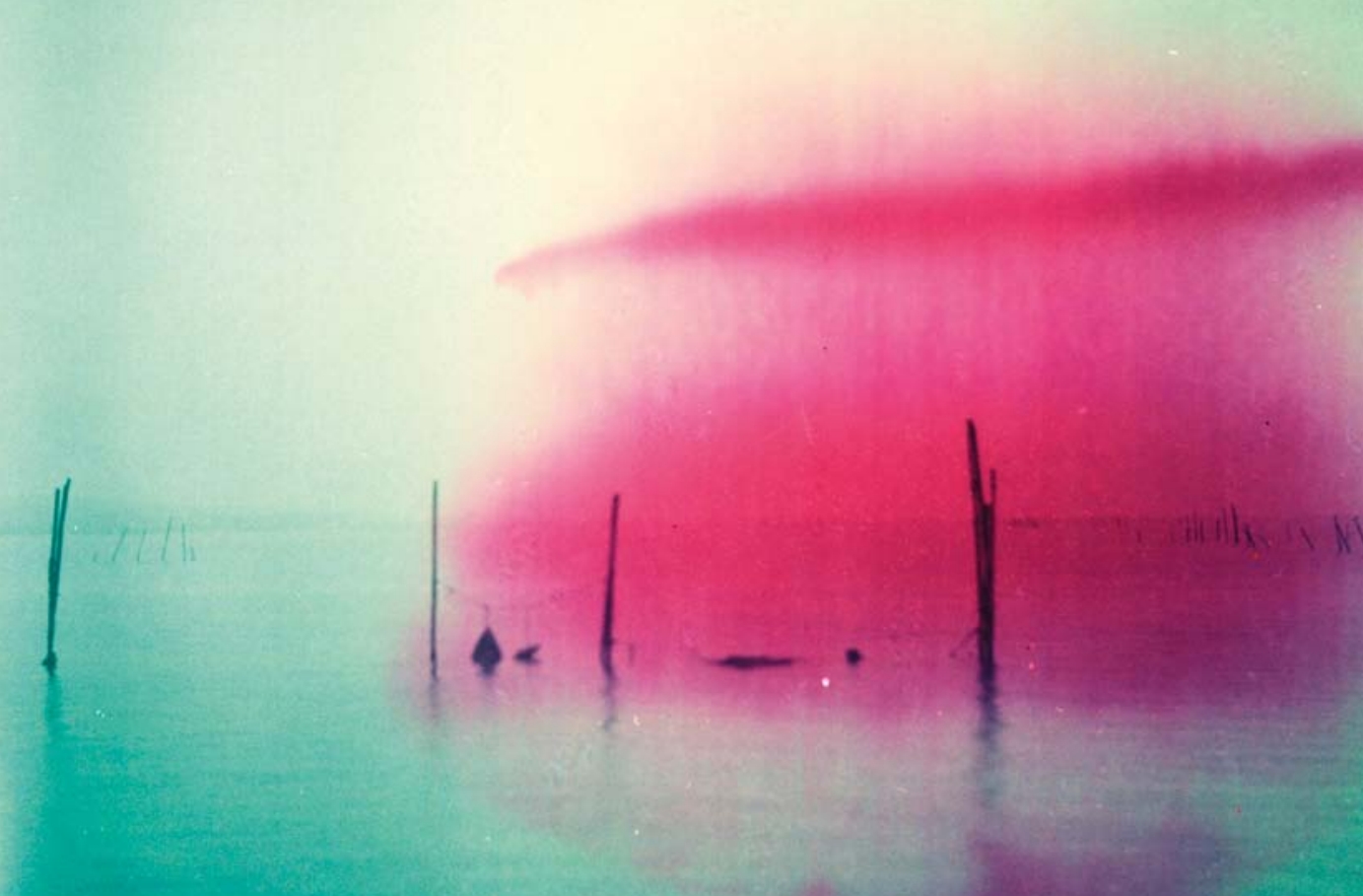
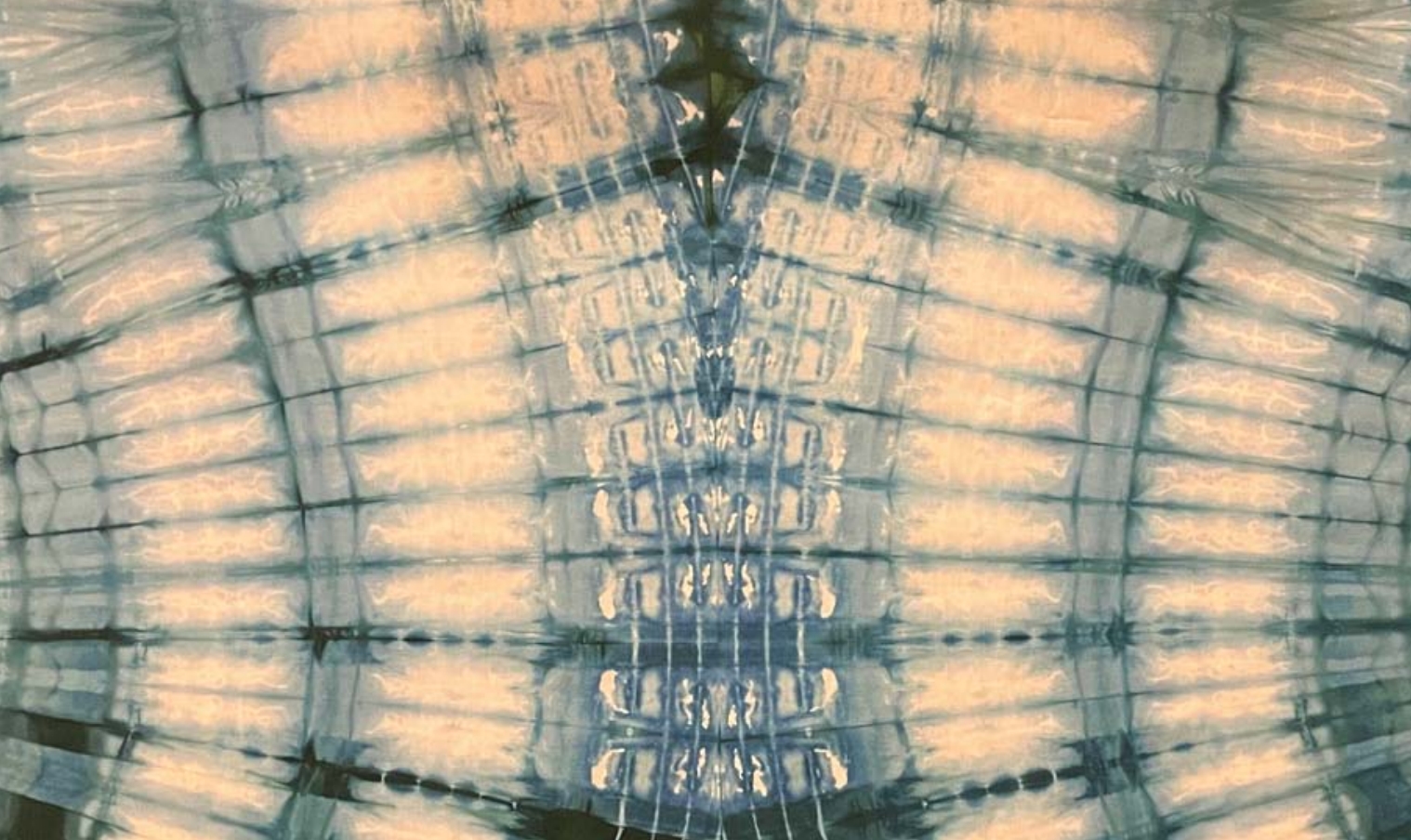

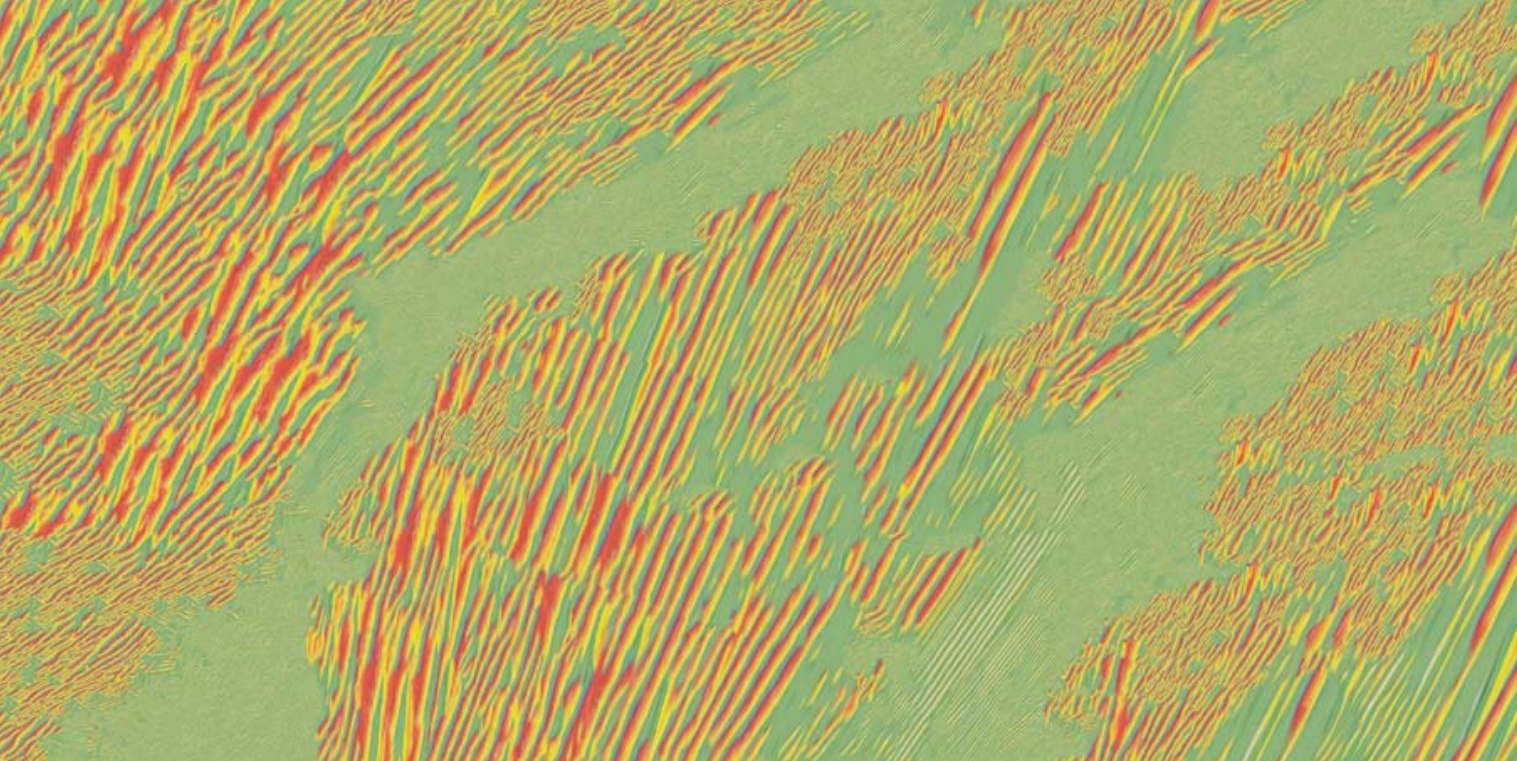
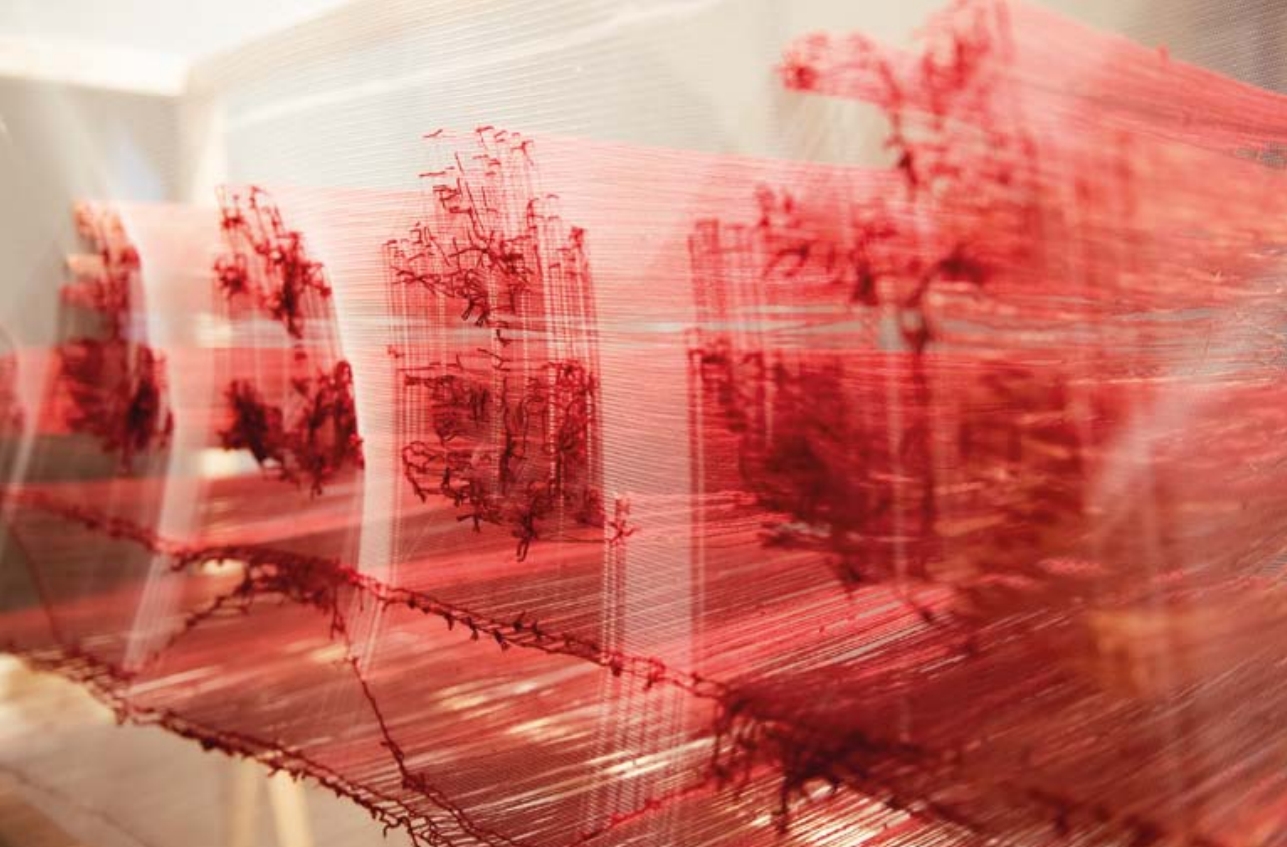
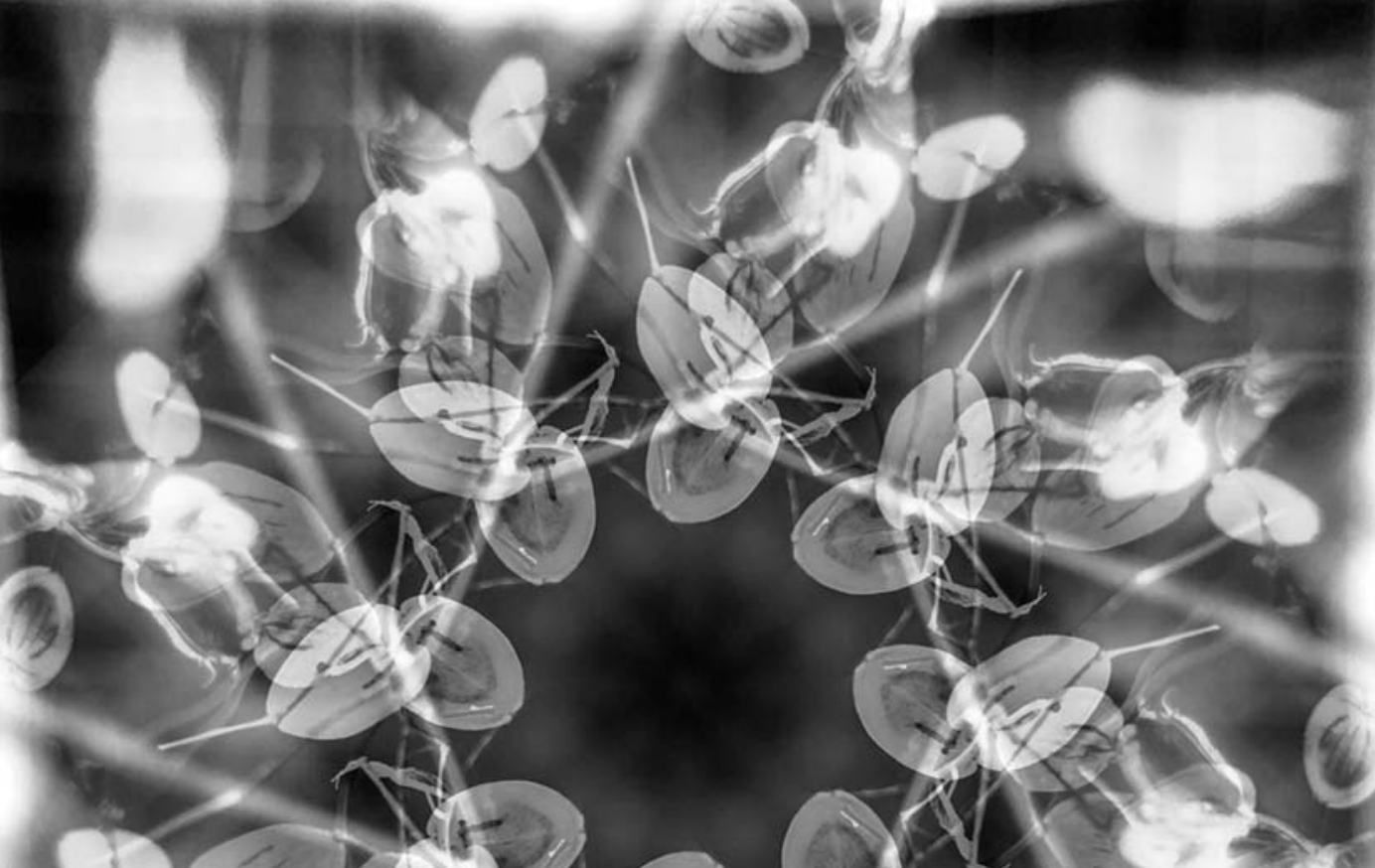
Dźwiękoksydacja
Sound Oxidation
Klangoxydation
Autor | artist | Autor: Wolfram Spyra (1964)
miejsce | place | Ort: St.-Marien-Kirche, Oberkirchplatz 1, Frankfurt (Oder)
Oksydacja oznacza reakcję pierwiastków lub związków chemicznych z tlenem, np. w wypadku metali, których powierzchnia, w połączeniu z tlenem z powietrza (lub wilgocią) utlenia się, tworząc tzw. rdzę.
Powietrze (lub woda) odgrywa istotną rolę również w odbiorze dźwięku, ponieważ zazwyczaj stanowi łącznik dla ludzkiego ucha. Oznacza to, że bez niego nie słyszelibyśmy nic, co w filmie Obcy wyrażone zostało słynną kwestią: „W kosmosie nikt nie usłyszy twojego krzyku”.
W instalacji Dźwiękoksydacja zardzewiałe metalowe płyty posłużą jako przekaźniki dźwięków, dzięki którym brzmienia generowane głównie elektronicznie, ale nie tylko, będą modyfikowane poprzez elektromechaniczną lub elektromagnetyczną transmisję na blachy. W zależności od wielkości, grubości, wygięcia, stopu, z jakiego wykonano metalowe płyty, oraz ich ustawienia w przestrzeni obraz dźwiękowy, który dotrze do odbiorcy, będzie odbiegał od pierwotnego kształtu fali, czyli pierwotnej formy dźwięku.
Oxidation describes the chemical reaction of elements or compounds with oxygen. In case of metals, this means: atmospheric oxidation of the surface caused by atmospheric oxygen (or moisture), which is commonly referred to as rust.
Air, and occasionally also water, play an important role in transmitting the perception of sound, with air being the most common coupling medium for the human ear. Therefore, without air we wouldn’t be hearing anything. Or with the words of Alien I: “In space no-one can hear you scream”.
In the installation Sound Oxidation rusty metal plates are used to transmit sounds. Mostly electronically generated sounds, but also some “concrete” ones, are being altered by electromechanical or electromagnetic transmissions onto the sheet metal. Depending on the size, thickness, curvature or alloy of the metal plates and their positioning within the performance space, the sound image revealed to the recipient deviates from its original wave form, resulting in a different sound quality.
Oxydation bezeichnet die Reaktion chemischer Elemente oder Verbindungen mit Sauerstoff, z.B. bei Metallen, die durch Luftsauerstoff (oder Feuchtigkeit) hervorgerufene atmosphärische Oxydation der Oberfläche, die gemeinhin als Rost bezeichnet wird.
Auch in der Wahrnehmung von Schall spielt die Luft (oder das Wasser) eine „tragende“ Rolle, denn sie ist für das menschliche Ohr im Normalfall das Koppelmedium. Das bedeutet, dass wir ohne sie nichts hören würden, oder gesprochen im Sinne von Alien I: „Im Weltraum hört dich niemand schreien“.
In der Installation Klangoxydation werden rostige Metallplatten als Übertrager von Klängen benutzt, wobei zumeist elektronisch erzeugte, aber auch „konkrete“ Klänge durch die elektromechanische oder elektromagnetische Übertragung auf Bleche eine klangliche Beeinflussung erfahren. Je nach Größe, Dicke, Biegung oder Legierung der Metallplatten und deren Positionierung innerhalb des Aufführungsraumes entfernt sich das dem Rezipienten sich offenbarende Klangbild von seiner ursprünglichen Wellenform, sprich Klangbeschaffenheit.
